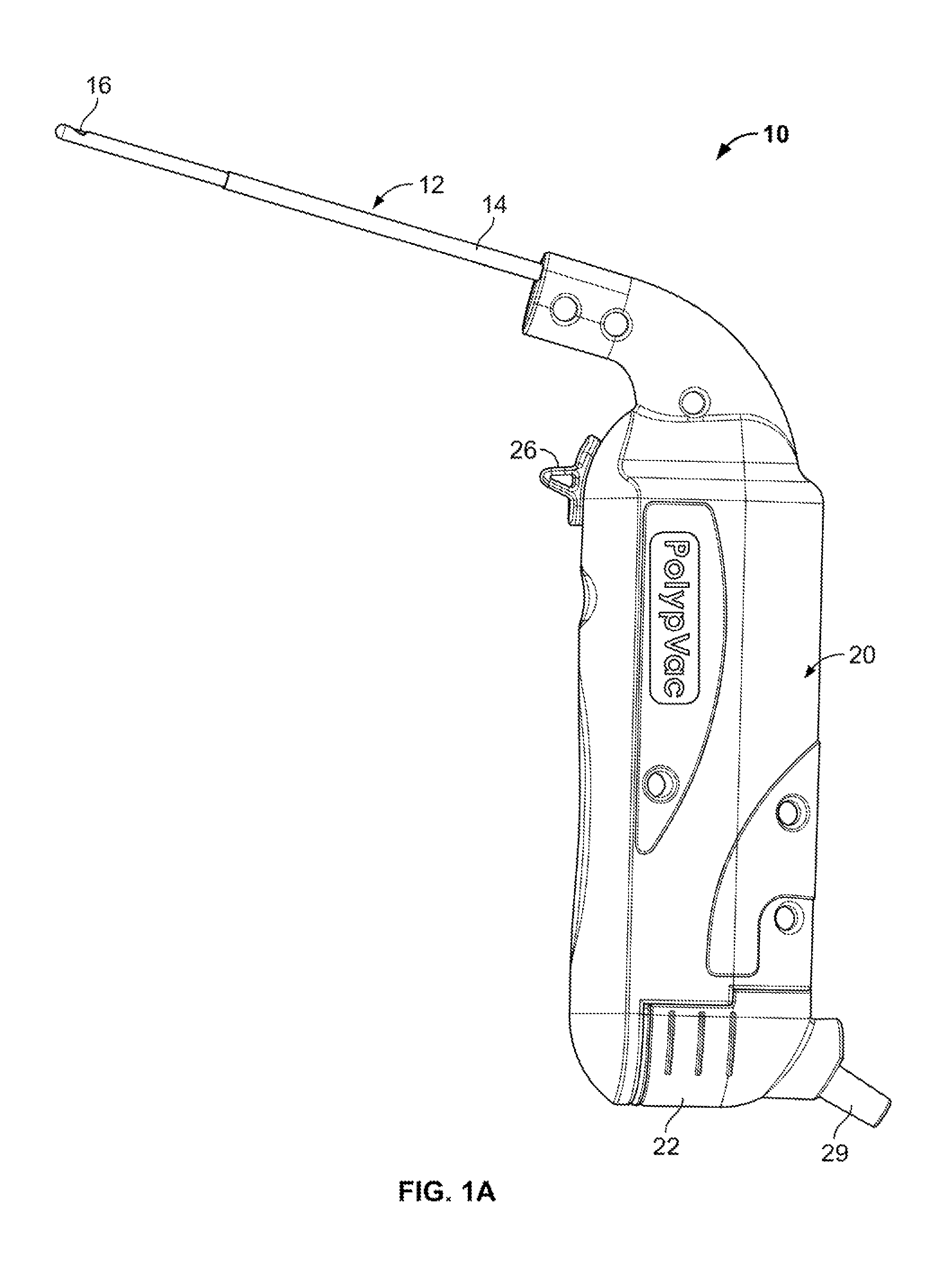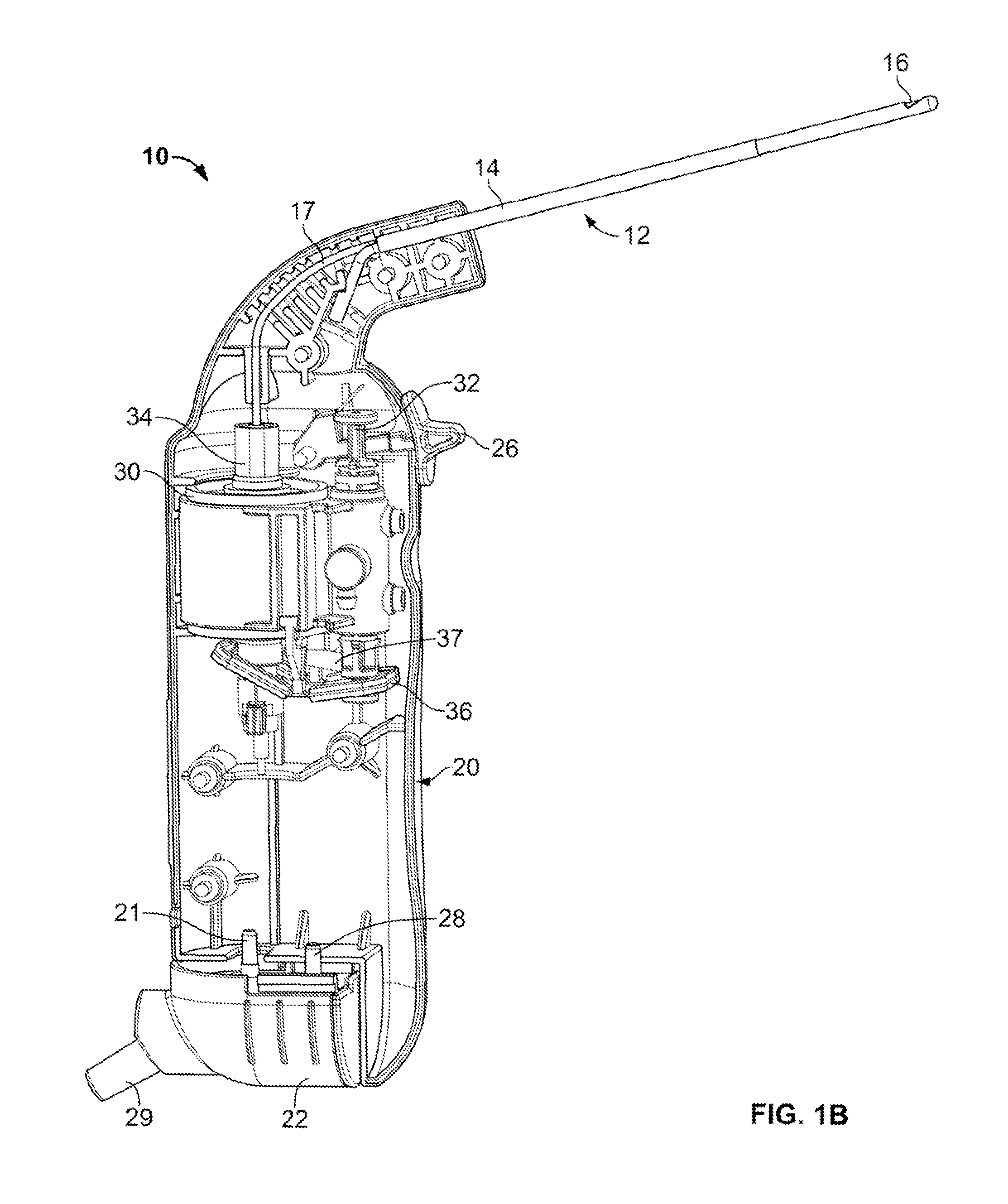Devices and methods for cutting tissue
a technology of tissue and device, applied in the field of tissue cutting devices and methods, can solve the problems of inconvenient connection between external power supply and operator, inconvenient operation, and distinct disadvantages of each power source, and achieve the effect of preventing unstable fluttering of the shuttle body
- Summary
- Abstract
- Description
- Claims
- Application Information
AI Technical Summary
Benefits of technology
Problems solved by technology
Method used
Image
Examples
Embodiment Construction
[0056]Variations of the devices are best understood from the detailed description when read in conjunction with the accompanying drawings. It is emphasized that, according to common practice, the various features of the drawings may not be to-scale. On the contrary, the dimensions of the various features may be arbitrarily expanded or reduced for clarity. The drawings are taken for illustrative purposes only and are not intended to define or limit the scope of the claims to that which is shown.
[0057]Various cutting devices and methods for cutting, resecting, incising or excising tissue are described herein. In certain variations a cutting device may include a mechanism or motor driven or powered by a variety of different power sources, e.g., suction from a vacuum source, pneumatic, fluid pressure (e.g. hydraulic), compressed air, battery power or electrical power or gas power or any combination thereof. The mechanism or motor may create a reciprocating or rotational motion output in...
PUM
 Login to View More
Login to View More Abstract
Description
Claims
Application Information
 Login to View More
Login to View More - R&D
- Intellectual Property
- Life Sciences
- Materials
- Tech Scout
- Unparalleled Data Quality
- Higher Quality Content
- 60% Fewer Hallucinations
Browse by: Latest US Patents, China's latest patents, Technical Efficacy Thesaurus, Application Domain, Technology Topic, Popular Technical Reports.
© 2025 PatSnap. All rights reserved.Legal|Privacy policy|Modern Slavery Act Transparency Statement|Sitemap|About US| Contact US: help@patsnap.com



